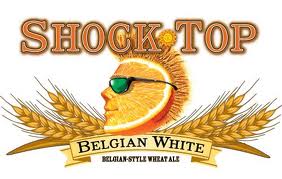When ABInbev aired its Bud Superbowl commercial extolling the virtues of boring, pale lager with its caricatures of moustachioed hipsters sniffing goblets of “pumpkin peach ale” I chose to give a pass on commenting (I refuse to embed the video on my site but if you haven’t seen it, search for it on Youtube).
Why? Partly I felt there were lots of others making useful and valid critiques of the video, such as that ABInbev actually BREWS a pumpkin peach ale via one of its recently acquired craft breweries. But mostly I let it slide because I didn’t agree with most of the reaction to the ad. People complaining about the insulting representation of craft beer fans, I think, were over-reacting and made us sound defensive and insecure.
Craft brewers have taken dead aim at the big boys for years, regularly mocking their products and their overdone marketing. Sure, I haven’t ever seen a craft beer ad that made fun of macro lager consumers, but I think we can see that it is a fine line sometimes.
However, earlier this week when my attention was drawn to a post on Ontario-based Ben’s Beer Blog, I changed my mind. Ben (as you can read here) offers up a glimpse into the inner world of Labatt/ABInbev Canada. In short, Ben got his hands on an internal ABInbev Canada document indicating plans to grow the faux-craft Shock Top brand 40% in Canada in 2015, and to do so by masquerading it as an independent craft beer. The post is from last fall, so it isn’t exactly news, but I hadn’t read it until this week, which actually is a good thing since we can now interpret the document with the awareness of the Superbowl ad.
The most egregious aspect of the document, in my opinion, is the recognition that 75% of consumers believe Shock Top is made by a small brewer and the company’s conscious attempt to design marketing to entrench that misinformation by maintaining it “is from a small brewer”. It is also noteworthy that there is a direct admission that small, locally-anchored craft brewers are giving the big boys headaches.
I need not repeat what Ben says in his post. Instead I want to contrast the two approaches. To one segment of the market, ABInbev wants to drive a rift between craft aficionados and “real beer drinkers”, a transparent attempt to stem the bleeding. They are happy to mislead their core segment about “who” craft beer drinkers are to create a negative attitude. On the other hand it wants to appeal those very aficionados (or at least the craft curious) by misleading them about Shock Top’s origins and placement in the market.
Good corporate strategy? Definitely. Clever marketing? Maybe. Acting with honesty and integrity? Not a hope.
More importantly, will it work? Likely in the short term. We will see Shock Top sales increase this year, and Bud will continue its reign at or near the top of the sales figures. But it is a strategy destined to fail in the long term. Ask any army general what happens when you try to run a two-front war. Neither half gets the resources it needs and eventually you get squeezed on both sides. The big boys have been squeezed for the past decade or two, and it will continue. Ramping up advertising won’t work. Buying legitimate craft breweries can diversify their portfolio but does nothing to salvage their core business. Pretending to be small and local is just as likely to create a backlash as to fool anyone for long. At some point they will have to make a decision and decide to whom they want to sell beer.
Clever attempts to have it both ways, notwithstanding.


March 14, 2015 at 8:14 AM
I have yet to see a big brewery put out a beer that could compete taste wise with a good craft brew. When the big boys keep cranking out pseudo-craft beers that miss the mark (ie. Shock top) we can still say that the small craft breweries produce better beer with more flavour. What would happen if one of the big breweries started cranking out a really good IPA or a true hefe? Which of our anti-big-beer arguments would apply then?
Also, why haven’t the big boys put out a beer that could actually compete in the craft market?